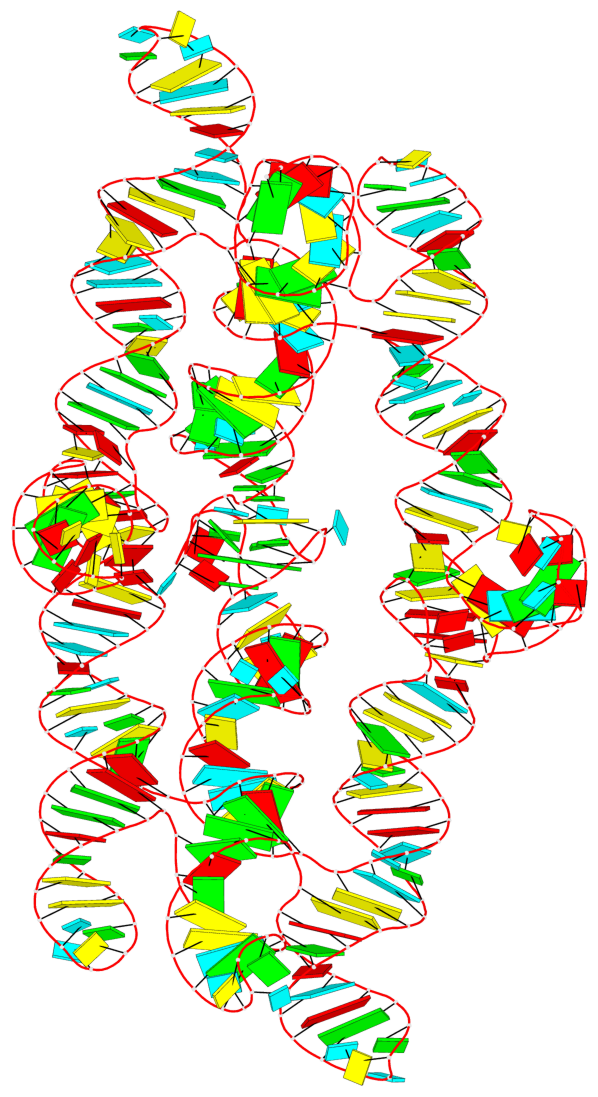Detailed DSSR results for the G-quadruplex: PDB entry 8tvz
Created and maintained by Xiang-Jun Lu <xiangjun@x3dna.org>
Citation: Please cite the NAR'20 DSSR-PyMOL schematics paper and/or the NAR'15 DSSR method paper.
Summary information
- PDB id
- 8tvz
- Class
- RNA
- Method
- cryo-EM (5.94 Å)
- Summary
- RNA origami 3-helix tile traptamer
- Reference
- Vallina NS, McRae EKS, Geary C, Andersen ES (2024): "An RNA origami robot that traps and releases a fluorescent aptamer." Sci Adv, 10, eadk1250. doi: 10.1126/sciadv.adk1250.
- Abstract
- RNA nanotechnology aims to use RNA as a programmable material to create self-assembling nanodevices for application in medicine and synthetic biology. The main challenge is to develop advanced RNA robotic devices that both sense, compute, and actuate to obtain enhanced control over molecular processes. Here, we use the RNA origami method to prototype an RNA robotic device, named the "Traptamer," that mechanically traps the fluorescent aptamer, iSpinach. The Traptamer is shown to sense two RNA key strands, acts as a Boolean AND gate, and reversibly controls the fluorescence of the iSpinach aptamer. Cryo-electron microscopy of the closed Traptamer structure at 5.45-angstrom resolution reveals the mechanical mode of distortion of the iSpinach motif. Our study suggests a general approach to distorting RNA motifs and a path forward to build sophisticated RNA machines that through sensing, computing, and actuation modules can be used to precisely control RNA functionalities in cellular systems.
- G4 notes
- 1 G-tetrad
Base-block schematics in six views
List of 1 G-tetrad
1 glyco-bond=--ss sugar=-3-3 groove=-w-n planarity=0.426 type=other nts=4 GGGG C.G94,C.G98,C.G277,C.G272
List of 2 non-stem G4-loops (including the two closing Gs)
1 type=lateral helix=#-1 nts=5 GUCGG C.G94,C.U95,C.C96,C.G97,C.G98 2 type=lateral helix=#-1 nts=6 GUAGAG C.G272,C.U273,C.A274,C.G275,C.A276,C.G277





